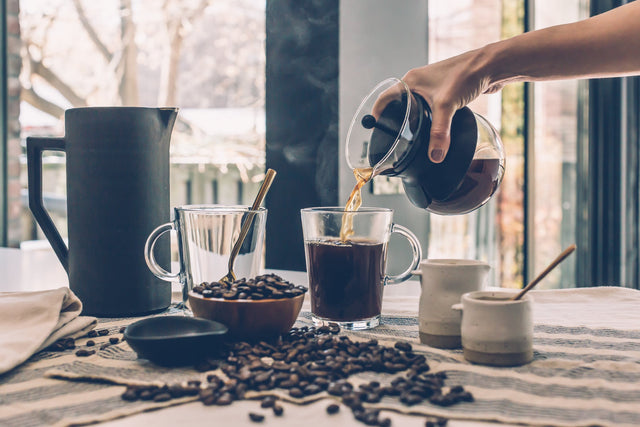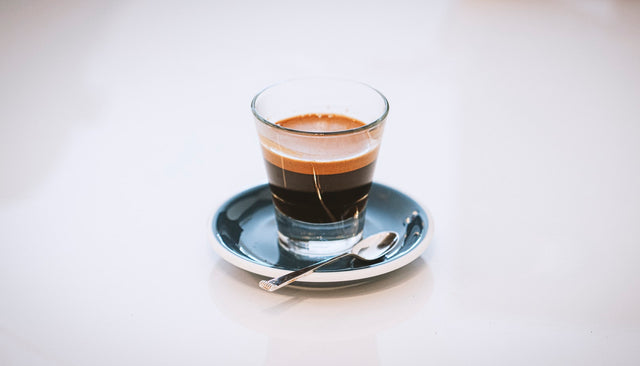In recent years, coffee has become a part of our daily life. Much of society is preoccupied with this energizing beverage, which has become a staple in many households. Many haven't stopped to think about where do coffee beans come from.
It is the spot for you if you are curious about the beans in your coffee. The content of this article will tell you all you need to know about coffee beans, so keep reading to satisfy your coffee curiosity.
Where Do Coffee Beans Come From
One of the most exemplary aspects of coffee is that it is high in antioxidants. Antioxidants are beneficial to the heart-brain system, the liver, and other organs. They improve the body's function and may prevent cancer.
There are flavonoids found in coffee, which are even more beneficial to your health than antioxidants. These flavonoids not only combat free radicals but also keep arteries clear.
On the other hand, coffee has reduced blood pressure and boosted memory and thinking in people. Furthermore, it also aids in regulating insulin, the body's "factory" for fat storage. According to research, when insulin levels in the body fall, fat is deposited more quickly.
From the Coffee Plant
The coffee plant produces coffee beans, a bush-like plant that can grow to be quite tall. However, coffee farmers usually keep the coffee plant trimmed to around 5 feet to keep it manageable. Bunches of cherries develop on these coffee bushes, and it is among them that you can find two coffee beans.
On average, the coffee plant takes about a year to start producing fragrant, white blooms. Furthermore, it might take up to four years before it starts bearing fruit. However, these trees will take about ten years to produce commercial coffee beans, valuable to growers.
Furthermore, the average lifespan of a coffee plant is between 30 and 40 years. However, they can live considerably longer depending on how well they are cared for and treated.
When the coffee berries are ready to pick, they become red. However, it requires a sharp eye to recognize when they are ready for harvest because harvesting too early or too late can significantly influence the final flavor.

Its Growth Area
Most coffee plants are cultivated around the equator, between the Tropics of Capricorn and Cancer, in a region known as the "bean belt." Here, the world's coffee capitals, such as Brazil, Vietnam, Colombia, Indonesia, and Ethiopia, call home, as these are the places where coffee thrives under ideal growing circumstances.
Surprisingly, the region producing coffee beans affects the flavor. Climate, height, and even soil type may affect the taste of the coffee made by the beans.
Its Anatomy
There are two seeds within each coffee cherry. Before roasting, these seeds are protected by many layers that must be carefully removed.
- Exocarp. Peel of the fruit or its outer skin. The exocarp begins green and gradually changes color as the fruit grows.
- Mesocarp. A thin layer of pulp or flesh lies just under the exocarp.
- Endocarp. It is a parchment-like envelope that wraps around the bean. This layer hardens throughout the maturation phase, limiting the eventual size of the bean.
- Spermoderm. Another layer of seed skin or a thin membrane envelops the bean.
- Endosperm. The actual seed (bean). It is a lovely green hue before it is roasted.
We begin the roasting procedure only when all of these layers have been meticulously removed, and the green seed has been taken from the coffee cherry.
Types of Coffee Bean Species
There are over a hundred different coffee plants, each producing another type of coffee bean. However, the bulk of the coffee we drink comes from one of two varieties: Robusta (also known as Coffea Robusta or Coffea Canephora) or Arabica (Coffea Arabica) or a mix of the two. Taste, growth circumstances, and pricing are all differences between the two kinds.
Robusta Coffee Beans
Robusta tends to be less sweet than its counterparts in Africa, Vietnam, and Indonesia, with lower acidity levels than Arabica. Robusta's lower acidity and more profound and more vital flavor components might generate wood or burned rubber tones, depending on the variety. As a result of its thick crema and rich flavor, it is a favorite choice for espresso.
Unlike Arabicas, which take many years to mature, Robustas may be cultivated at elevations as low as 1000 meters, producing more fruit per tree. A significant reason for their lower cost is that they are less susceptible to pests and weather conditions.
Another thing to remember is that Robusta coffee beans have more caffeine. Robusta coffee beans are often smaller and more round than Arabica beans and whiter with a less prominent center crease.
Arabica Coffee Beans
As one of the most common coffee beans, Arabica has origins going back to 1,000 BC, making it one of the oldest varieties of coffee. Generally oval with a prominent center crease, these beans are more significant than Robusta beans. Plus, Robusta has higher caffeine content.
Connoisseurs appreciate these beans because they have a more fruity and flowery flavor with notes of chocolate and almonds. They also have a greater acidity level than other coffee beans.
In general, it costs more than Robusta. As a result, it is more sensitive and requires more precise growth criteria, such as weather and altitude, to flourish. Commonly cultivated between 500 meters and 2500 meters above sea level.
In addition, Arabica coffee beans are known for their lack of caffeine content. Brazilian coffee is now the most famous Arabica coffee in the world.

The Harvesting Process
Since coffee cultivates in hilly regions, mechanized harvesters are not possible to use. Moreover, you can usually harvest mature coffee cherries by hand. Brazil is a notable exception, where the relatively flat terrain and vast expanse of the coffee fields allow for the employment of technology in coffee production.
Coffee trees produce 9 to 18 kilograms of coffee beans. The coffee bushes have an average of 2 to 4 kilograms of cherries, and an experienced picker may collect 45 to 90 kilograms of coffee cherries each day.
Two techniques to harvest coffee:
Strip Picking
All the ripe and unripe cherries are removed off the branch simultaneously, either mechanically or manually.
As a rule, Robusta Coffee is the sole option. A machine can harvest Robusta coffee, which shakes the trees so that all the cherries fall at once.
Even though this method of harvesting coffee beans appears to be simple, the best coffee picks with great care. As long as there is rain, the coffee beans won't dry out. The beans will quickly degrade if exposed to the air for too long. It is the same with too much sun exposure. Therefore, a variety of additional considerations you must consider before planting a particular crop.
Selective Picking
The cherries are hand-selected, and you can take only the ripe ones from the tree. Pickers inspect the trees every 8 to 10 days and choose only the completely ripe cherries. This approach is more time-consuming and expensive. It is usually used with Arabica coffee. Furthermore, pickers gather between 100 and 200 pounds of cherries a day on a standard field.
Other harvesting methods, such as prioritizing and corrugated harvesting, are less conventional. It is possible to grind beans into little balls, then separate the beans from the balls using these procedures. As a result of these approaches, the bean may be processed more quickly, with less harm.
As for how to pick our coffee beans, a typical approach is to fertilize the plants. The taste of a coffee bean improves by fertilizing it. In the end, compared to non-fertilized beans, fertilized beans have a more natural flavor.
Types of Coffee Processing
As a result, coffee beans are taken from the tree and sorted into the coffee processing as a whole.
You can process coffee in three ways: natural, washed, and honey. Each technique adds a distinct flavor to the coffee. However, natural, washed, and honey processing is by far the most popular.
Furthermore, you can process coffee in various ways. A technology known as C02 decaffeination, for example, removes caffeine from coffee to produce the world's best decaf coffee.
Natural
The natural processing approach yields coffees that are fruity and sweet in flavor. Because the fruit is kept entirely intact on the coffee bean, it may transmit its sugars to the seed within. It produces a somewhat fermented coffee ranging from tropical fruits like mango and jackfruit to grapes and berries and is sometimes compared to wine.
Natural coffees are left to dry, fruit and all, rather than having the fruit and mucilage removed during the processing. A little fermentation happens among the seeds while the coffee dries in the sun, providing a recognized and unique "winey" flavor to the coffee. This 'natural' flavor appeals to specific individuals.
Washed
Coffees prepared with the washing technique often offer the purest taste characteristics. They might have delicate jasmine notes, luscious blueberry tastes, or even strong chocolate tones.
The clean cup character of washed coffee stems from the fact that it has been rinsed clear of everything that might influence the flavor of the coffee seed.
After picking the coffee, separate the fruit and peel from the seeds. The beans are then placed in a water tank and allowed to soak for up to 72 hours. Soaking helps to remove any sticky sweet mucilage that has remained on the coffee seeds.
Honey
Honey processing falls in between washed and natural processing. It usually creates a sweeter cup of coffee than a regular coffee cup, but without the winey, fermented tastes of untouched coffee.
The honey processing technique, contrary to its name, does not involve honey in any form. The term derives from mucilage, a honey-like material that encases the coffee seed. A portion of this mucilage or 'honey' stays intact on the seed as it dries during the honey process. It adds to the sweetness of the coffee.
Honey processing has three stages: yellow, red, and black. The various levels correspond to the quantity of mucilage that remains on the seed. The deeper the color and the more mucilage remaining in the coffee, the sweeter and fruitier it may be.

Take Your Coffee Adventure to the Next Level
We can enjoy our daily cup of joe because of this tree—but there's more to it than meets the eye!
In conclusion, coffee is an excellent source of caffeine than energy drinks since it delivers a stimulating impact without putting a person's health in danger. Extensive coffee research performed throughout the years helps to support such a stance. However, studies suggest that the popularity of energy drinks is growing. Specifically, coffee and energy drinks have significant cultural, biological, and social distinctions and an obvious resemblance in the presence of caffeine.
Everyone in the world enjoys coffee, but we all want it in various ways. The possibilities are infinite; the key is to experiment with multiple flavors and mixes. Try adding some ingredients to take your coffee adventure to the next level.
Nobody is the same when it comes to coffee. With so many coffee kinds, roasts, mixes, ingredients, and personal preferences in the globe, it is simple to understand why there are so many varied perspectives on what constitutes a good cup of coffee.
So, first and foremost, you must seek out the best coffee for you and your unique preferences, whether it is a blend of different beans or a specialty grade single origin from a particular coffee farm. You don't have to be concerned about how other people drink their coffee.
Several methods excite your taste senses, ranging from rare beans and specialty coffee types to iced beverages and flavored cappuccinos.
Once you've found the right mix for you, you may play around with additional ingredients to take your coffee to the next level. Several components might provide you with that energizing flavor every morning. Of course, it is best to start with the most popular ones previously tried and evaluated by others who enjoy coffee beverages.
Request a mix of our single-origin coffees at Loving Labor Coffee Co. to discover quality coffee tailored to your preferences.
More stories

Why is Coffee Good for You



